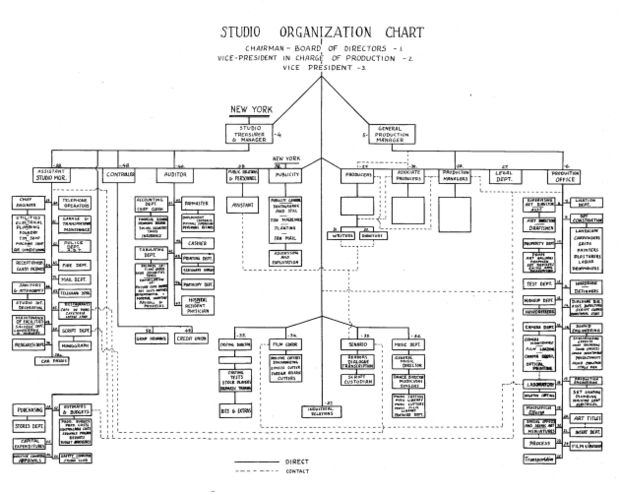 |

| |
|
|  |
Radium Baths For Your Health
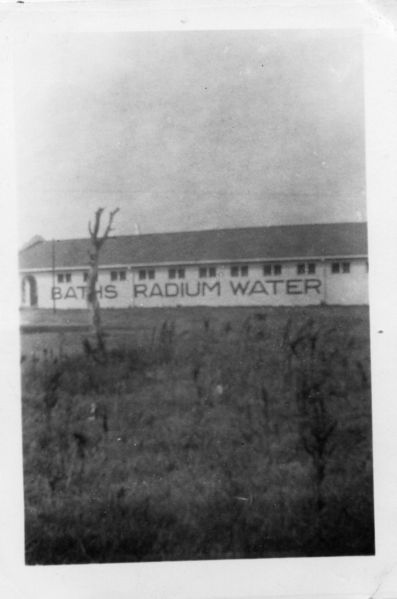 Combining bathing and radium doesn't strike me as a wise idea: as the name alludes, radium is a highly radioactive element that decomposes into Radon, another not-so-healthful element. Back in the 1920s and 1930s, however, radioactive compounds were seen as quite the opposite: a curative, capable of curing pretty much whatever ails you. Radium was relatively stable ('relatively' when it comes to radioactive elements), common enough to be available to quacks everywhere, and just radioactive enough to not cause instant death. On top of it all, radium was naturally-occurring, and with the new radiation-detecting apparatuses developed at the beginning of the Atomic Age, people were amazed to find out just how much radiation existed around them. They began looking for hot-spots, and soon discovered that some of the natural mineral baths made a Geiger counter sound like a flamenco tapdancer. So, if you were interested in going to the spa, you might pass up on the average, non-radioactive hot-water mineral spa and visit a radium spa like the one on the right...while it wasn't immediately deadly to casual users, the already-ill tended to continue to get sicker, so they used more radium-laced products, and got sicker, so they got more radium...you get the idea. Just going home wasn't necessarily going to get you away from radium - if you couldn't make it to the spa, you could irradiate your own water at home, or buy the stuff pre-packaged. All of these photos are slightly blurry -- it makes me wonder just how much was the photographer, and how much was the proximity to radiation. That dead, scraggly tree in the foreground should have been a clue. Labels: 1930s, quack, radioactive, radium, spa
Cape Cod Illustrated
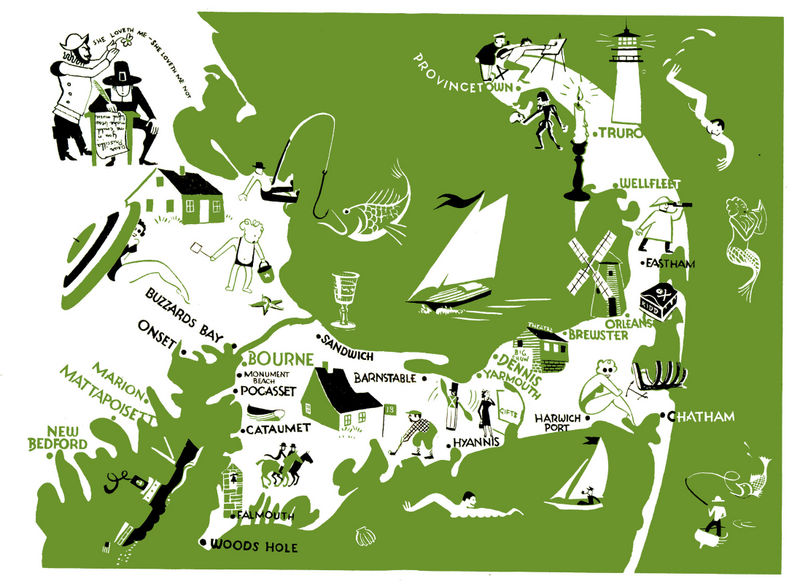 This map This map, short on words but large on illustrations, diagrams just a small portion of Massachusetts known as Cape Cod. It was printed as part of a booklet by the New York, New Haven, and Hartford Railroad Co (which, in turn, was part of a 7-booklet set covering the entirety of the railroad's reach). The booklets were designed for tourists and encouraged them to contact the railroads internal 'travel bureau', as though East Coast residents had no idea the Cape was known for its beaches and fishing -- although its target was probably not locals, but folks like me from the flyover states who'd be intrigued by the treasure chest marked " Kidd". I had no idea his lost treasure was marked so clearly on local maps! Labels: 1950s, cape cod, maps, railroad
Portable Radios: Root of Modern Technology
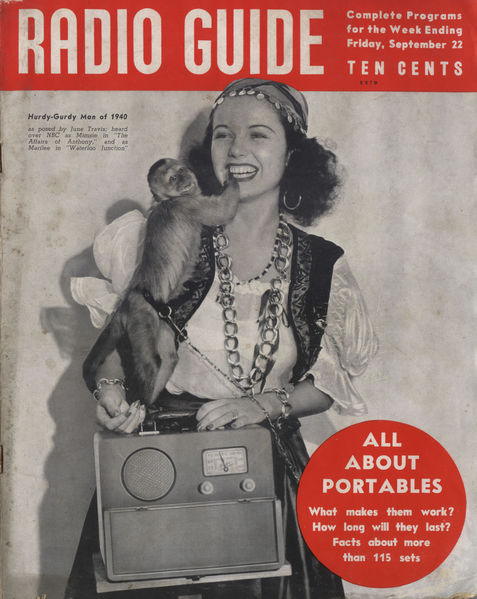 This is where it all started: you might argue that it was the portable record player, or the Walkman, or the laptop, or the iPod, but portable personal electronics started in the 1930s with the advent of portable radios. As a revolution, the cover shows just how large the jump was from the last comparable technology. The magazine compares a person carrying a portable radio to a hurdy-gurdy street performer. The concept of carrying around a small box of audible music was unbelievably new for the time -- music boxes were one thing, but a broadcast receiver was beyond anything that had been seen before. It didn't replace anything, like the lineage from cassette to CD to MP3; it struck out in uncharted territory. Battery powered equipment was not new; before mains were run to homes, everything was either battery-powered or hand-powered. The advent here is miniaturization. Vacuum tubes were the size of a fingertip and required far less electricity to run their internal parts than ever before, and smaller compact batteries had the oomph to power them. This continues to be the focus of today's portables: how much can you fit into the smallest case? The article in the magazine reads, on one hand, like it's been transcribed and word-replaced every year for the past hundred: Now you can take it with you, smaller technology improves weight and portability, new power sources get you longer operation times, includes headphones for private listening, and people are integrating it into their daily lives. The details are delightfully dated, but are easily echoed with modern technology. Celphone users can immediately sympathize with a person of 1930 seeking a a signal while deep inside a steel-structured building. People still attend sports events with a media-receiver, to not only see the event live but get up-to-the-minute commentary from outside sources. And, lastly -- a point that the article emphasizes without divining the social cost -- people demand the ability to take their personal, in-home media with them wherever they go. As the adage goes, the times may change, but people will remain the same, whether they've got a 10-pound AM radio slung over their shoulder or a fully-featured computer in their pocket. Labels: 1930s, 1939, portable radios, radio guide magazine
20th Century Fox Organization Diagrams
The Stereo Realist In Wisconsin
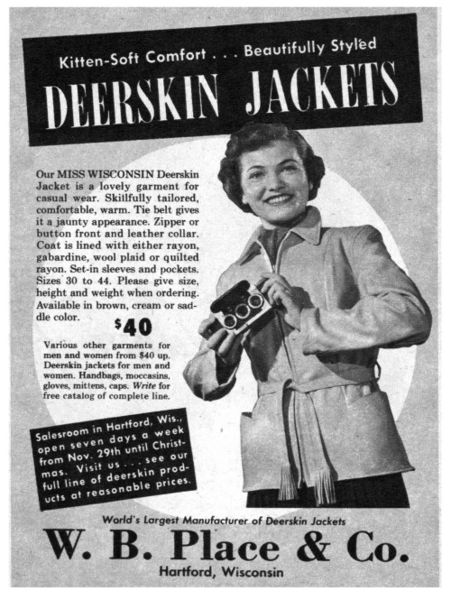 Today's image isn't about deerskin jackets, or who this model is, or about where in Wisconsin this advertisment comes from. In this lady's hands comes one of the technological marvels of the twentieth century: the Stereo Realist, a 3D camera that the average person could own and use. First manufactured in Milwaukee, Wisconsin in 1947, the camera was produced for nearly thirty years and enjoyed a lot of publicity and popularity for a time. The camera used regular 35mm film, still the standard size today, which also made processing more available to the public. The advertisment comes from the Milwaukee Journal's Sunday Picture Journal, December 7, 1958, putting it well within the era of the Stereo Realist's popularity. The Stereo Realist had a very high-profile life, though, as a photographic toy carried by celebrities of all kinds, from Vincent Price to Dwight Eisenhower. What better way to add to the class and style of a deerskin jacket than to include a home-town boy that went and got famous? The camera had a reputation for being mechanically complex, but the designer accomodated this with quality structure, and the camera's downfall wasn't complexity or difficulty but an overall decline in 3d photography. Still, just put " stereo realist" into a search engine, and you'll find rabid collectors who want the camera in the ad -- that specific camera -- in their collection. Labels: 1950s, 1958, 3d photography, stereo realist
Never a More Wretched Hive of Scum and Villany
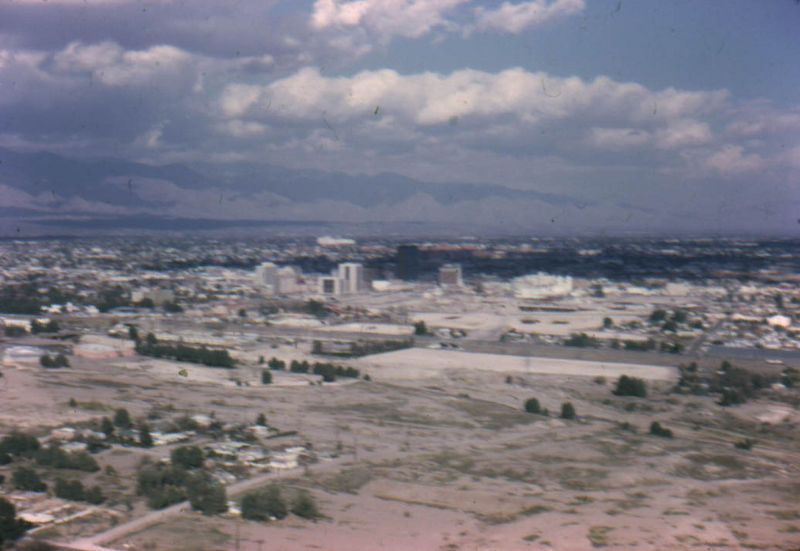 The perspective and content of this photo requires me to get a little geeky. When I first looked at it, I immediately connected it to a scene from Star Wars -- Luke and ObiWan are on their way to save the universe, and in procuring a ship they stop on a cliff overlooking the spaceport. ObiWan warns: " Mos Eisley spaceport. You will never find a more wretched hive of scum and villainy." The actual city, I don't know -- it appears to be in Arizona, given the content of other images in these slides, and the number of tall buildings would indicate it's not a tiny town. The odds of finding a Corellian starship for hire are probably low, though. Labels: 1960s, arizona, city, skyline
The USS Nautilus. Artist's Impression
 In December, 1952, Collier's Magazine made the USS Nautilus its cover story. Nautilus was the first US nuclear-powered sub, and it set record after record during its time at sea. The date of the Collier's article, however, is a clue to this picture's origin. Construction on the Nautilus started 14 June 1952, and the ship wasn't seaworthy until 1954. The design for the sub was definitely in existence, but the ship itself was still a few years away. With the help of Rear Admiral Homer N Wallin, Collier's was able to assemble an excellent description of our newest not-so-secret weapon. The above image has to be enlarged to be appreciated; the detail is tremendous, and I'd bet the original was huge. The diagram spanned two pages, from edge to edge. I find it a bit disconcerting that the area marked "nuclear lab" is right next to the galley, but I'd imagine that this artist's rendition isn't completely accurate; it does closely resemble the map seen here, though. The article gives quite a few details about the Nautilus' capabilities, no doubt as a show of US power and induce fear in our enemies of the surprise attack from such a formidable opponent. The details in the diagram above do show a bit more than I'd expected -- in the room marked "Crew's Quarters", the following detail is shown:  Yes sir, our red-blooded sailors, spending months cruising beneath the choppy waves, will enjoy the companionship of the all-American pin-up gal (nsfw). Maybe the artist was far more truthful about the submarine's nature than I thought. Labels: 1950s, 1952, cold war, collier's magazine, nuclear submarine, uss nautilus
Revere, Minnesota, 1920
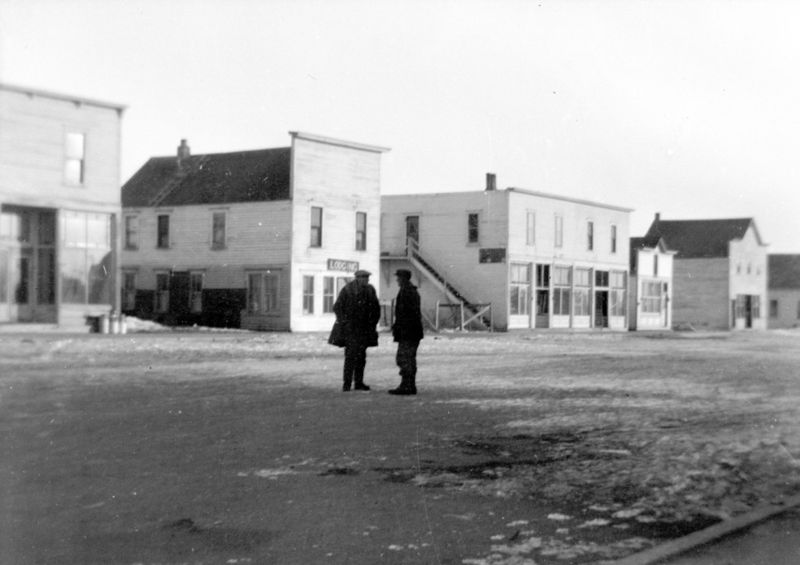 Welcome to Revere, Minnesota. Walnut Grove, where some of the Laura Ingalls Wilder books were set, is the largest town to the west, and Lamberton is the larger town to the east. All these towns are connected by US Highway 14, but the railroad was once the main way to get from here to there. Only a couple miles separate these towns, with Walnut Grove and Lamberton being larger, and Revere becoming a stopping point between the two. During the early 1920s, however, the family of one of the residents took a bunch of photos. The photos come from the large lot of negatives I purchased last year. The people are in their twenties and thirties in the negatives I've scanned before, and in these photos they seem to be in their teens. I can't quite tell if they were visiting Revere, or if they had lived in Revere during their youth. Anyhow, the photographer in the family took lots of pictures, capturing quite a bit of Revere's downtown area. Labels: 1920s, minnesota history, revere, small town
Space Flight - Ten Cents
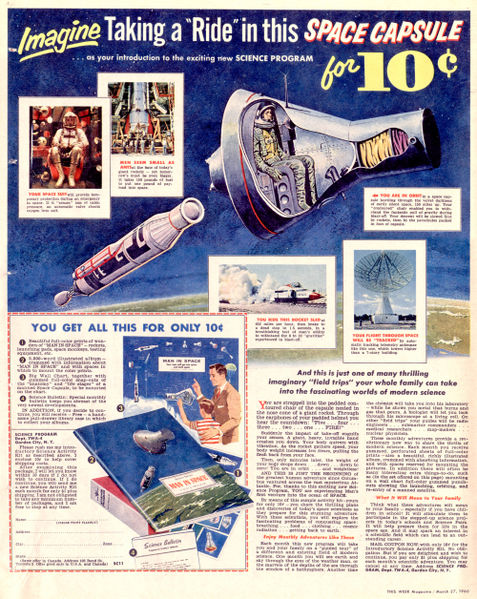 In 1960, you could drop a dime in the mail and get yourself some genuine space-flight experience! The Science Program was a subscription service, delivering a booklet devoted to a single subject each month. Ten cents was the introductory offer, but future booklets cost a dollar (plus shipping). Subscribers also got posters, star-charts, and other helpful activities to help teach about the varied topics, from nuclear power to cartography. Take a close look at the date, though: this advertisement was printed on the back of the 27 March 1960 edition of This Week magazine...a full year before the USSR and USA launched their respective manned spaceflights. The potential for wild speculation and amateurish writing was ripe, but the Science Service was above such things. Established in the 1920s, the Science Service was a newswire for scientific thought, sponsored and edited by scientists for accuracy and clarity to the layperson. These booklets were carefully written for accuracy, as much information as they had in the 1960s, and certainly inspired the minds of today's scientists and engineers. That is, if their parents could come up with a buck a month to keep the sticker books coming. Labels: 1960, 1960s, books, science program, science service, space flight
Lectra Haul Versus Ford Mustang
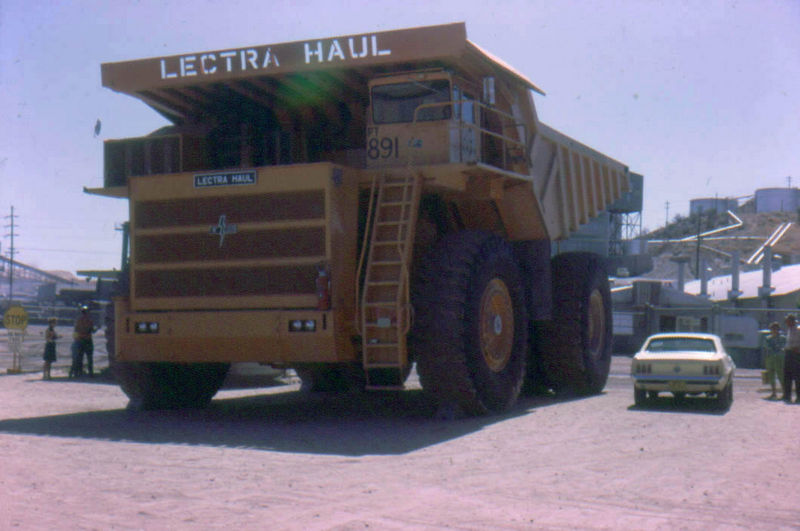 This undated photo, from the 1960s This undated photo, from the 1960s, shows just how big a Lectra Haul is. That, on the right, is a mid-1960s Ford Mustang. If the people standing next to the Mustang were to stand on its roof, they might just reach the top of the Lectra Haul's tire. This is actually a small one; although this was big in the early 1960s, as the decade progressed massive moving machines were growing in size at an alarming rate. This one could carry 85 tons, but by the end of the 1960s their manufacturer, Unit Rig, had moved on to bigger, more immense machines capable of carrying hundreds of tons at a time. Now, for this photo's origins -- this came from the same set of slides as the 4H parade, but the rest were all rather scattered about...no real order. So, I'm scanning them in no particular order. I do know it was taken in the 1960s, based on other slides with marked dates. A large number of the slides are taken in Arizona or California, although pictures of houses and interiors are quite clearly in Arizona. The background doesn't look like Arizona to me, though: distant oil storage facilities, overground pipelines, lots of 'nothin, it looks more like Oklahoma or Texas. Turns out, Arizona has an oil industry, so its likely that an oil company would have bought a Lectra Haul from Unit Rig (which also manufactured electrically-powered oil wells and equipment), and left it parked out where tourists could gawk at it. Labels: 1960s, arizona, lectral haul, unit rig
Travelling By Corvair
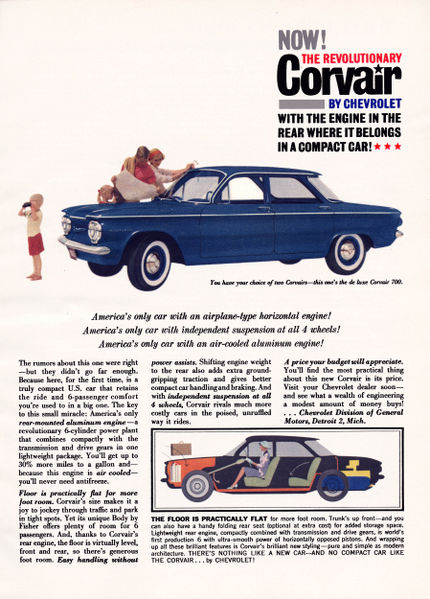 America's only car with an airplane-type horizontal engine!America's only car with an independent suspension at all 4 wheels!America's only car with an air-cooled aluminum engine!This ad for Chevrolet's Corvair America's only car with an airplane-type horizontal engine!America's only car with an independent suspension at all 4 wheels!America's only car with an air-cooled aluminum engine!This ad for Chevrolet's Corvair from 1959 shows just how advanced the little car was -- largely inspired by the Volkswagen, the Corvair put an ample air-cooled engine inside a compact body (although a bit larger than a VW), and championed it as the low-cost car of the future. Compare to the Corvair's contemporaries of the late 1950s: big steel behemoths with cast-iron monstrous engines up front where they belong. The Corvair's competition was almost entirely European imports like the VW, Volvo, and Porche, so Chevrolet was carving a new market for their vehicles, feeding American steel to the customers in need of a good 'ol American machine, and something small and efficient for people looking for something more manageable. The Corvair, as Mr. Nader will gladly tell you, was a victim of its advanced design -- that fancy suspension in the ad was prone to causing catastrophic accidents, and the rear-weighty engine location caused steering issues for drivers. Deaths, sadly, result in distrust for the new technology, and despite a much-too-late redesign with the '64 models by '69 the car was done. Rear-engines in American cars never really went far; the Corvair was one of the last, although Pontiac (who had also tried a rear-engine with their Polaris prototype) went with a mid-engine in the Fiero, and Pontiac's ex-designer John DeLorean put a rear engine in his DMC 12. Labels: 1950s, 1959, advertisement, automobilia, chevrolet, corvair
Leatherheads: North Dakota High School Football, 1930s
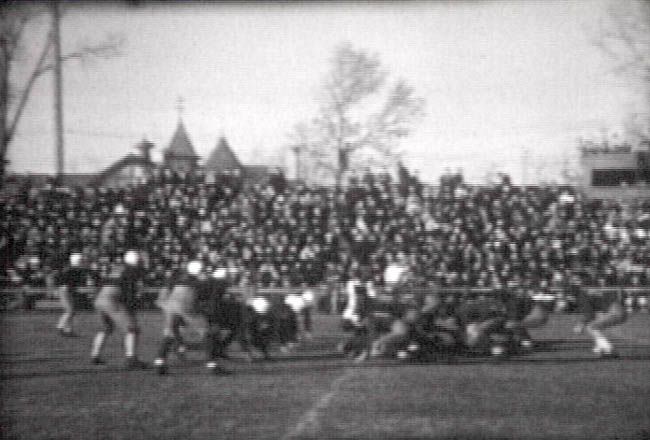 Yeah, you could consider this a tie-in to the new movie Leatherheads ( opening today across the country!), but it's as good an excuse as any to show an old movie of leather-helmeted football I own. The video linked above was part of a very small film-reel from the late 1920s or early 1930s; it couldn't be any earlier, because the buildings depicted weren't around before 1927. The first 80% of the film is an Armistice Day parade, which, of course, sets the date as November 11th. The last few minutes of the film, however, shows the Fargo-Grand Forks football game that evening, held on NDSU's football field. Not much is shown, however it's probably the oldest movie of North Dakota high school football on the internet. Sure, it doesn't have any George Clooney, but it's real high school football, the way it once was: full of bruised faces. Labels: 1930s, film, football, north dakota
Maurus Jokai In His Vineyard
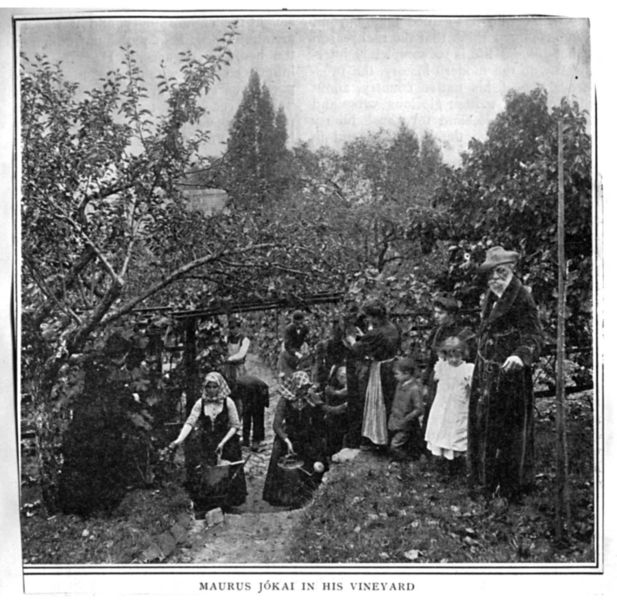 Here we see elderly Maurus Here we see elderly Maurus (on the far right) in his vineyard, surrounded by family and servants. Maurus Jókai -- or, more familiarily, Jókai Mór, was one of the most famous Hungarian novelists. As with many novelists devoted to the love of their country, Jokai was politically active..eventually running afoul of the Habsburgs and fleeing to Russia. Twenty years later he returned, continuing to write but also assisting in the country's new independence as a governmental adviser. Later in life, he lived in Balatonfüred, known for its beautiful villas alongside private vineyards -- this is probably where the above photo was taken. Now, we have this picture. We know it is from the early 1900s, but no later than 1905 (based on inspection of other photos in the Scrapbook). Jókai was well-known in the US because many of his revolutionary compatriots ended up here in the 1840s and 1850s, but the timeframe brings us to a more poignant point in Jókai's life. In early 1904, at 79 years old, Jókai developed difficulty breathing and became greatly ill. On May 5th, 1904, he passed away. I would expect that the magazine article that this photo accompanied was a profile on the recently-deceased author, showing him in a setting other than posing for a portrait. Labels: hungary, jokai mor, maurus jokai, novelist
Fauna of the USSR
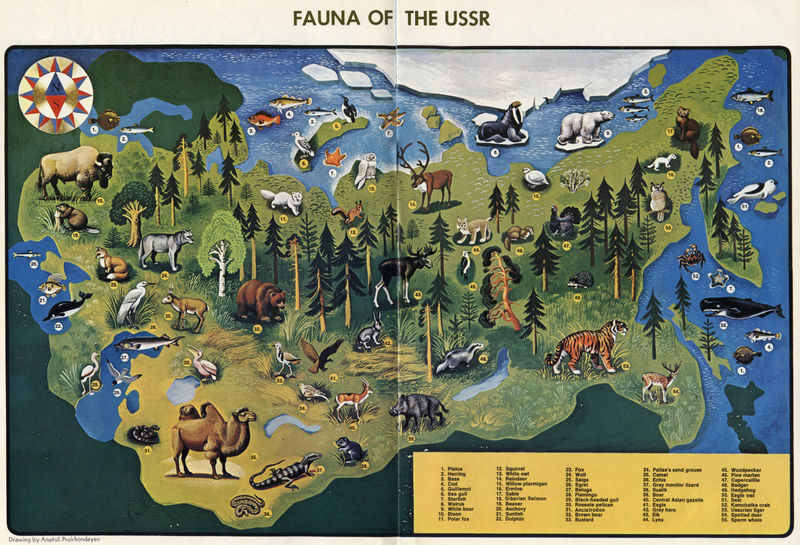 To avoid appearing American-centric, here's a map of the USSR's wildlife from 1972. A decade or two after the USA wildlife map I posted a couple weeks ago, this USSR map comes from the pages of Soviet Life Magazine ( see also) . It shouldn't be surprising, but the similarity to our American wildlife is readily visible. Both countries cover similar climates, span comparably mountainous, arid, wet, warm, and cold areas, and were (geologically speaking) connected not too long ago. It shouldn't be a shock to find deer, moose, bears, badgers, and so forth. There's a few asia-centric critters here, such as monitor lizards, camels, and tigers, but compared to our mountain lions, alligators, and turkeys we locals tend to forget that rather exotic creatures live in our backyards. The USSR map seems to have far fewer critters than the US, but that accounts for American excessiveness: the US map has a lot of repetition; look around the edge of the map for a more accurate count, and we'd be about the same if it weren't for all the different bird variants on the US map. Labels: 1970s, 1972, maps, ussr, wildlife
Street Railway Journal, April 1, 1905
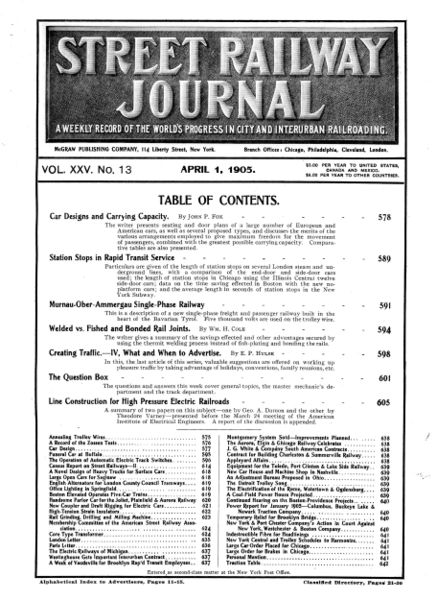 On April 1 1905, railwaymen around the world were pleased to find this issue of Street Railway Journal waiting for them. The magazine contains news and photos regarding municipal electric railways, such as trolleycars -- none of that high-falootin' long-distance steam railroading here! Industry magazines have been a moneymaker for quite some time; their market is niche, they can quickly provide demographics for advertisers, and since they're quite often free, they're guaranteed to get into the hands of the people advertisers want to see it. You can get free industry magazines, too: I get emailed offers all the time, because I signed up for one, and now they've got me. Stuff on chemical processing, digital-optical equipment, modern quality control processes, and internet technology. Those are today's hot, up-and-coming technologies: in 1905, the world of short-line railroads was The Future. You may not realize it, but the industry is still around: subways, the El, metro light transit, they're all evolved from the electric urban trolleycars of 1905. Following the progression of technology, the Street Railway Journal joined with the Electric Railway Review to become the Electric Railway Journal in 1908, and then the Transit Journal in 1932. Where's the rest of the magazine? I'm in the process of scanning it; it'll be available here, and via LuLu like the Fallout Shelter booklet. Labels: 1900s, 1905, electric railroad, magazine, street railway journal
|  |
|
|
 Combining bathing and radium doesn't strike me as a wise idea: as the name alludes, radium is a highly radioactive element that decomposes into Radon, another not-so-healthful element. Back in the 1920s and 1930s, however, radioactive compounds were seen as quite the opposite: a curative, capable of curing pretty much whatever ails you. Radium was relatively stable ('relatively' when it comes to radioactive elements), common enough to be available to quacks everywhere, and just radioactive enough to not cause instant death. On top of it all, radium was naturally-occurring, and with the new radiation-detecting apparatuses developed at the beginning of the Atomic Age, people were amazed to find out just how much radiation existed around them. They began looking for hot-spots, and soon discovered that some of the natural mineral baths made a Geiger counter sound like a flamenco tapdancer.
Combining bathing and radium doesn't strike me as a wise idea: as the name alludes, radium is a highly radioactive element that decomposes into Radon, another not-so-healthful element. Back in the 1920s and 1930s, however, radioactive compounds were seen as quite the opposite: a curative, capable of curing pretty much whatever ails you. Radium was relatively stable ('relatively' when it comes to radioactive elements), common enough to be available to quacks everywhere, and just radioactive enough to not cause instant death. On top of it all, radium was naturally-occurring, and with the new radiation-detecting apparatuses developed at the beginning of the Atomic Age, people were amazed to find out just how much radiation existed around them. They began looking for hot-spots, and soon discovered that some of the natural mineral baths made a Geiger counter sound like a flamenco tapdancer.












